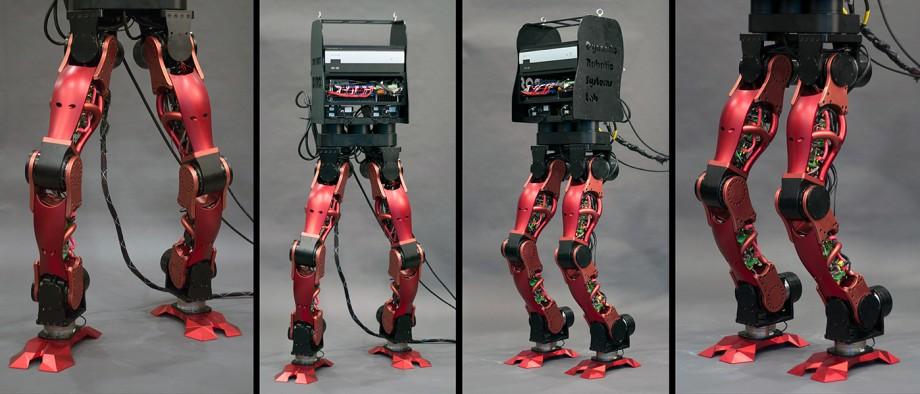He’s upright. He’s functional. He even dances. This is the humanoid robot design, also known as DyRoS, produced through CNC machining after using the invaluable process of 3D design and 3D printing to form a visualization of the structure, as well as allow for testing. A culmination of an ongoing project by The Digital Human Research Center, funded by the Advanced Institutes of Convergence Technology, DyRoS was presented last week at Humanoids 2014, an international conference on humanoid robots.
DyRoS is not only a project in engineering but an exercise in aesthetics, as its creators hope to see an integration of art and engineering meld together — even exemplifying this through making the robot part of a contemporary Korean dance performance. Aesthetics is one of the first topics the creators of the robot discuss in their paper Aesthetic Design and Development of Humanoid Legged Robot, positing that the way the robot — or any product, obviously — looks has everything to do with how the human perceives its worth and functionality.
DyRoS was created in South Korea, and the robot’s size proportions are approximate to that of the average South Korean female. The ‘legs’ do imitate human anatomy in a rudimentary way, while still making exceptions for the placement of the motors.
The Digital Human Research Center led the aesthetic design and manufacturing, while the Dynamic Robotic Systems Lab led the electronic specifications and mechanical manufacturing. DyRoS began as a simple sketch which after multiple iterations was transformed into a 3D design, culminating in a 3D printed model which was assembled for testing. Colors of the robot were visualized through renderings in 3D studio Max, with the main parts anodized in red and the basic parts anodized in black.
The structural design of DyRoS is deceptively simple in that assembly of the frame is completed with a minimal amount of bolts, which allow easy access to the electronics. The computer is housed in the ‘torso’ which will eventually, with future design and development, transform into an entire upper body for the robot which currently runs on an Intel I7-630m processor and 4Gbyte DDR3 RAM. The computer also runs roboticsLab as realtime control software.
DHRC has made the design for DyRoS open source, and they look forward to seeing what variety of sizes as well as further affordability other users can lend to the design. Have you been involved in 3D printing to create or test any robotics? Tell us about it in the DyRoS forum at 3DPB.com.
